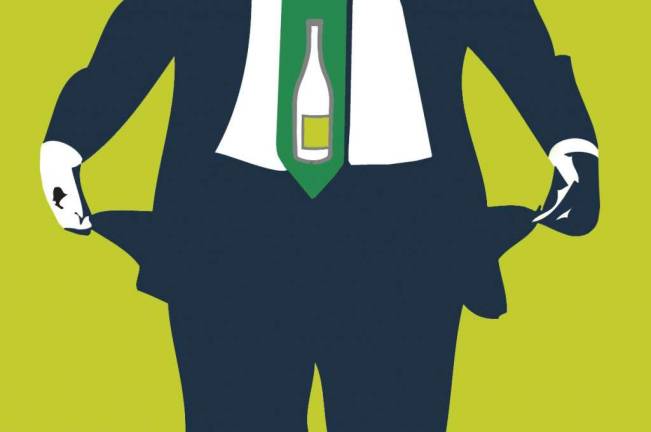Mixing and Matching Wine and Food

From blue cheese to spicy vindaloo, finding that perfect vino match A couple of weeks ago, I wrote a bit about the basics of pairing wine with food. I received a lot of questions from friends who read the column and wanted more specifics, so this week I'm going to expand on some of the principles I introduced in the last piece. The first question, which I got from more people than any other, is, "What about wine and cheese?" This seems to be an area that is more daunting and intimidating than it needs to be. The ideas behind matching wine with cheese are as simple as the ideas behind matching wine with any other food-the three basic principles still apply. There are an enormous number of cheeses that have a marked acidity to them. This is due to the natural acids that are present in cow, sheep and goat's milk. Under certain conditions, when those cheeses age, the enzymes that are present can make the acidity even sharper. This is the case with fresh goat's milk cheese (or chevre, as it is called in France), which I mentioned a couple of weeks ago. There are many other cheeses that have the same kind of sharpness to them. Humboldt Fog, which is also made from goat's milk, and Bûcheron both fall into this category. In this instance, I would match them, with a wine that has acidity, as well. As I mentioned last week, this will hide the sourness and bring the more subtle flavors in the cheeses front and center. Then there is the entire palette of blue cheeses. Many of these are so strong that they are an acquired taste, but to those who appreciate them, they are among the highest regarded in the world. A classic pairing for most robust blue cheeses is port. This goes with the second principle I discussed last week: pairing opposite tastes together. In this case, it is salty and sweet. Even to someone who isn't head over heels for the blue-veined curd, this pairing can make it palatable. Match a port with a blue Shropshire and you'll taste caramel, toasted hazelnut and a host of other intense flavors you'd never thought were there. The ultra-creamy cheeses present their own problems. With these, sometimes the fat content is so high that many people can only take a tiny portion before their palate is overwhelmed. The third principle is the best to use here; to match opposing textures. In this case, a rich and decadent Brillat-Savarin, which coats the tongue with every bite, should be matched with a heavier sparkling wine, like a blanc de noir. The bubbles clean the palate between bites, making the cheese less heavy and more enjoyable. Aside from the flavor profiles, a popular idea in the wine and food world is to match wines and cheeses together that originate from the same area. This goes to the French idea of terroir, which is the concept that the land, the air and the specific weather patterns and climate of any area can be tasted in the food and wine that are made from the produce of that place. If a wine from Burgundy tastes like Burgundy, then wouldn't a cheese from Burgundy match with that wine? In many cases, the answer is yes. And, staying with the Burgundy example, there are a number of runny cheeses from the area, such as époisses, that match brilliantly with the delicate and complex pinot noirs from that region. Then I got hit with the second big question, which is "what about spicy food?" I quickly touched on it in the opening to my last piece on pairing but didn't fully unpack it. The basic concept here is to put out the fire. It's similar to the idea behind opposing tastes, but what you're doing is tempering the heat. The best way to do that is to drink something with a moderate amount of sweetness to it. A riesling from the Mosel area of Germany is exactly what a spicy vindaloo wants to help cool its jets. Keep the wine and food questions coming! And don't be afraid to experiment yourself to find out what works and what doesn't. Follow Josh on Twitter: @joshperilo.